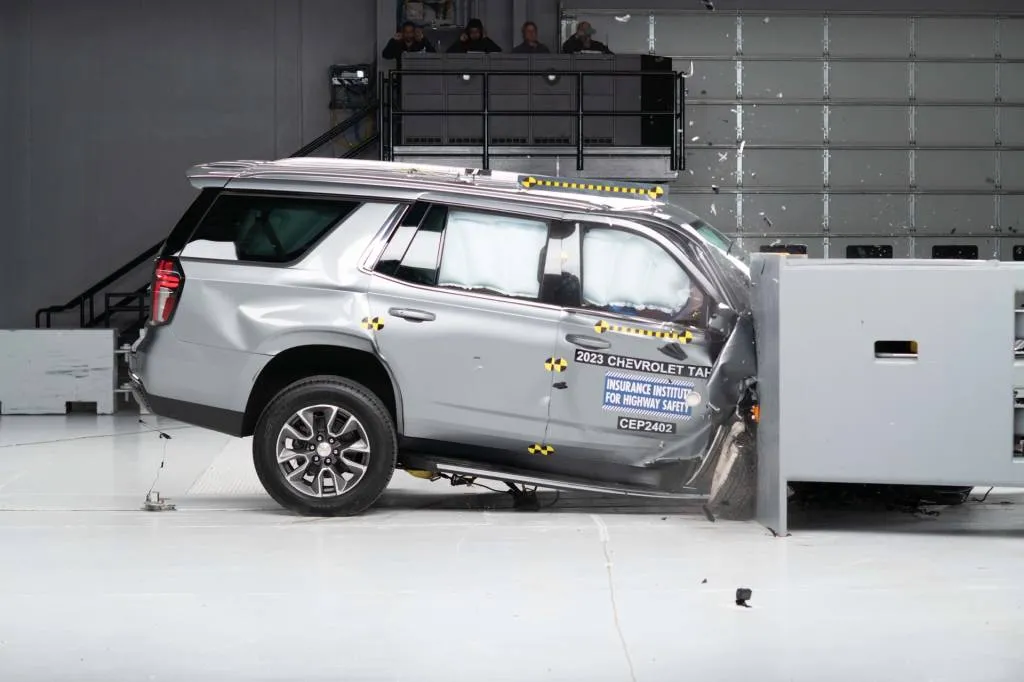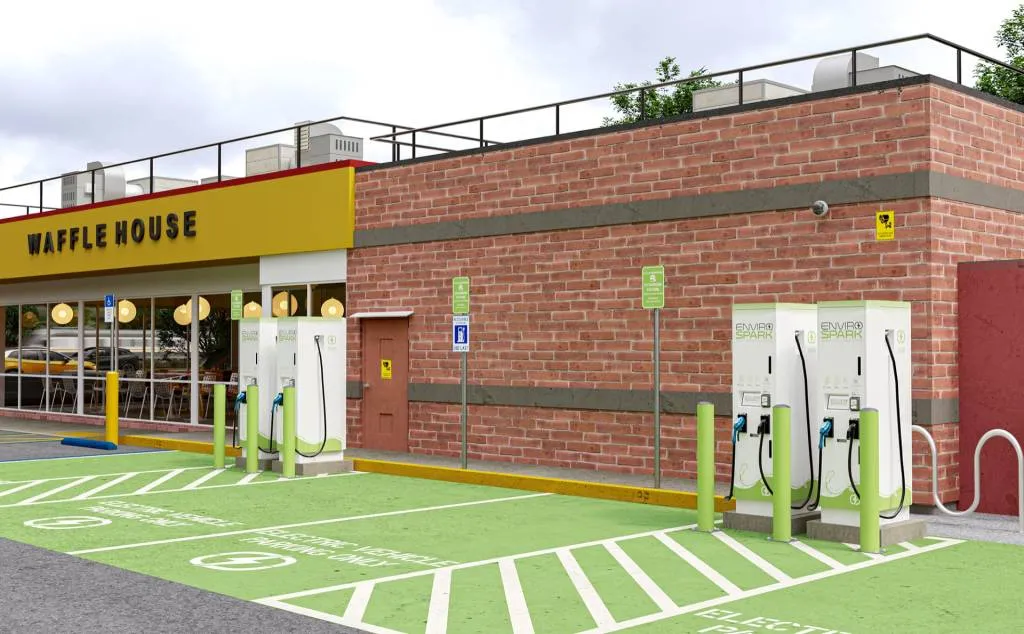How safe are some of the biggest, thirstiest SUVs?
Why is the $7.5 billion federal EV charging network moving so slowly?
This is our look back at the Week In Reverse—right here at Green Car Reports—for the week ending June 6, 2024.
It was another big week of getting up-close time with some of the most anticipated new EVs, while reporting on some of the top stories for green-car shoppers. Rivian on Thursday Rivian set the stage for its mass-market R2 with more comfortable, better-performing, lighter, and more simplified “Gen 2” versions of its electric trucks. The 2025 Rivian R1S SUV and R1T pickup will be offered in Dual-, Tri-, and Quad-Motor layouts, with Standard (LFP), Large, and Max battery packs. And as Green Car Reports experienced on the road, in the mud, and on the drag strip, it all adds up to a more appealing vehicle.
2025 Toyota Crown Signia
And do you want a roomy, gasoline-fueled hybrid station wagon that can get nearly 40 mpg? That’s what Toyota has introduced with its 2025 Crown Signia, and at around $45,000 it’s a comfortable, more carlike family alternative to the boxier Highlander Hybrid.
At the reveal of the Jeep Wagoneer S electric SUV last week, executives confirmed that extended-range Wagoneer and Grand Wagoneer 4xe versions are on the way, with large plug-in battery packs and packaging that manages to maintain their three-row layout. Given Jeep’s plans for mild hybrids, plug-in hybrids, EVs, and more, it leaves a great many build combinations—and based on executive comments about which kind of plug-in is better for which situation, it may be rolling these out in the wrong order.

2024 Jeep Wagoneer
Separately, last week, the CEO of Stellantis, Jeep’s parent company, told media at an investor conference last week that a $25,000 Jeep EV is coming to the U.S. soon.
The federal government on Friday revealed vehicle fleet fuel efficiency standards for 2027-2031 that will improve the average mpg of vehicles, but less aggressively than originally proposed. Along with softer targets for trucks and SUVs, the rules give automakers a lot of bonus points for EVs.

2025 Volvo EX90 production begins in South Carolina
U.S. production of the 2025 Volvo EX90 electric SUV has started in South Carolina, the Swedish automaker reported this week. The first U.S. customer vehicles will be delivered in the second half of the year, it says. And U.S.-made Hyundai and Kia EVs are coming to dealerships soon, with U.S. Kia EV9 production starting last week and Hyundai’s initial U.S.-made EV now confirmed as the Ioniq 5. But will they qualify for the full $7,500 EV tax credit?
Meanwhile, Senator Joe Manchin is back to criticizing the Biden administration’s EV tax credit rules, and this week he called on enforcement of rules requiring locally sourced battery content—rules that have recently been eased for two years. Manchin already has an issue with the “leasing loophole” written into the credits, effectively federally subsidizing foreign-made luxury EVs.
Over in Europe, this week Mercedes-Benz and Stellantis both paused European battery plans, as they refocused their efforts potentially around affordable EVs, amid slowing demand especially for premium EVs.

2024 Mercedes-Benz EQS SUV 580 4Matic
Mercedes-Benz has recalled nearly 15,000 EVs over a software issue that may lead to a shutdown of the high-voltage system. It amounts to a bug in the vehicles diagnostic system and no fault of the battery, but the issue requires a trip back to the dealership for an update.
According to a recent patent application, Ford is considering EV battery swapping via drive-up docking stations. If this system based on smaller modules ever becomes reality—for fleet vehicles, perhaps, or other types of mobility—it would be very different than the full-pack replacements that companies like Nio and Ample do today.

2023 and 2024 Chevrolet Tahoe crash-test impacts by the IIHS
Several big, gas-guzzling SUVs aren’t actually so safe, found the Insurance Institute for Highway Safety (IIHS) in a new round of crash tests of the Chevrolet Tahoe, Ford Expedition, and Jeep Wagoneer. Of these three-row models that largely return well under 20 mpg, only the Wagoneer received the top “good” rating.
A new survey from AAA found that fewer Americans are likely to buy a new or used EV in 2024, versus a similar survey last year. The reasons aren’t surprising, and they come down to cost and convenient charging; specifically, it suggests that nearly a third of Americans are unable to install an EV charger where they live.

Rendering of EnviroSpark EV chargers at at Waffle House
Why is the $7.5 billion federal EV charging network that was funded in 2021 moving so slowly? To date only eight stations in six states have opened, according to a report, and it’s largely because states are taking the lead but have to face a “patchwork of public and private utilities, regulators, and bureaucracies.
And New York City actually had fleets of electric taxis in the ‘90s—the 1890s, that is. But a few unfortunate incidents, and the dominance of petroleum distribution, meant that EVs didn’t re-emerge as a viable alternative to internal combustion taxis until the 2010s.
_______________________________________
Follow Green Car Reports on Facebook and Twitter
Read the full article here




